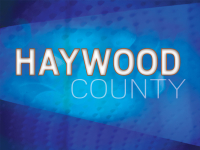Grappling with growth: Waynesville comprehensive plan unveiled

The Town of Waynesville took another big step toward plotting its long-term future with the draft release of an update to its 20-year-old master planning document, which will attempt to balance the sometimes-competing interests of progress and preservation.
“This workshop is the culmination of a year and half of hard work,” said Elizabeth Teague, Waynesville’s development services director, during a July 1 meeting attended by Waynesville aldermen, planning board members and plan steering committee members.
Titled Waynesville 2035: Planning with Purpose, the document outlines the guiding principles by which planning, zoning and land use decisions will be made over the next 15 years. It both builds upon and supersedes the old plan, called the Waynesville 2020 plan.
Early in 2018, Teague and town staff, with the help of Chipley Consulting, design, engineering and planning firm Stewart and J.M. Teague Engineering and Planning, began the process of compiling the plan by conducting various technical analyses and consulting periodically with stakeholders and the public.
A comprehensive plan steering committee was also established, filled with a diverse group of people from different communities in Waynesville — both geographically, and professionally.
That committee met nine times, but there were also a good half-dozen public meetings and a visioning workshop, as well as a meeting in the Pigeon community.
Related Items
The main goal of the plan — established through the community input process — is to preserve Waynesville’s character by supporting economic development while still protecting the environment in accordance with so-called “smart growth” principles centering on land use and development.
Those principles tout mixing land uses, promoting compact building design, creating a range of housing opportunities and encouraging walkable neighborhoods that imbue a sense of place.
Farmland, critical environmental areas and open space should be preserved, per the plan, and development should be directed towards existing communities rather than sprawling exurbs.
Watershed and slope protection are also important, because the regional tourism economy depends on their vitality. However, future development must also encourage a diversified economy that realizes the benefit of robust health care, education, manufacturing and small business sectors.
Recommendations included in the draft center on two concepts: land development, and infill.
On the development side, nodal development around intersections is to be encouraged, as opposed to linear development between nodes. Some of the areas where this type of development could occur are at Asheville Highway and Ratcliff Cove; Raccoon Road and U.S. 276; Dellwood Road and Russ Avenue; the Great Smoky Mountains Expressway and Russ Avenue; GSME and Eagle’s Nest Road; GSME and Plott Creek Road; GSME and Hyatt Creek Road; Howell Mill Road and Vance Street; Howell Mill Road and Russ Avenue; and Brown Avenue, Allen’s Creek Road and South Main Street.
Development should also be restricted in rural areas, especially rural areas with important natural resources. To that end, a new “residential conservation” designation will limit housing in such zones to two per acre. Medium and high-density development will be directed toward major thoroughfares.
Infill development — which focuses on vacant or underutilized parcels within areas that have already been developed — is to be encouraged adjacent to the GSME and in regional center districts through more flexible zoning.
Redevelopment of rail corridors will continue to encourage industrial uses, but will also allow for mixed-use, including residential.
Downtown Waynesville’s unique aesthetics are a result of many years of effort both by the town and by the organization that manages the town’s municipal service district, the Downtown Waynesville Association.
Preserving the look and feel of the central business district — again, a major hub of Haywood County’s thriving tourism economy — means that new development or redevelopment must remain compatible with the existing character of the area, including the use of appropriate design standards.
Updated land development standards, including historic guidelines for frontages, should place special focus on the “maker economy” — arts, crafts, food and brewing.
Just as the plan recognizes and celebrates downtown Waynesville, it will also attempt to bolster development in the town’s two other urban cores — Frog Level, and Hazelwood.
Frog Level, just a short walk from Waynesville’s trendy Main Street, is a National Register historic district and has an industrial character that features several historic structures. Currently, according to the plan, Frog Level is undergoing an “entrepreneurial resurgence,” that should be fostered through strategic infill and streetscaping improvements.

Small differences are apparent between the current land use map, adopted in 2002 (above), and the proposed map (below) included in the 2035 plan. Town of Waynesville photos

Hazelwood, once a separate town of its own, has more of a residential character than Frog Level, but like Frog Level, it also has a small “main street” area that gives the neighborhood its own identity.
As one of the southern gateways to downtown Waynesville, however, it “does little to convey a sense of arrival to visitors,” according to the report, which proposes a variety of streetscaping improvements and mixed-use zoning west of the railroad tracks that will promote both commercial and residential development.
Connecting all three of these urban cores — downtown Waynesville, Frog Level and Hazelwood — is also a top priority. The pedestrian environment should be enhanced by bolstering parks and paths, curbs and crosswalks. These streetscaping improvements should also share some cohesiveness across the cores to lend a commonality to three very distinct areas.
Further afield, Russ Avenue’s Waynesville Plaza is an anchor of Waynesville’s commercial economy, featuring national and local retail chains. That area could also see more mixed use, including residential parcels and community space.
A number of consistent themes run through the 177-page plan, especially the need for housing of all types.
Haywood County’s well-documented affordable housing crisis is partially the result of soaring real estate prices in the region, especially Asheville, and it does little good to encourage new businesses to move to town if their employees can’t live anywhere near their jobs.
Some of those themes, though, seem to be at odds with each other — especially, preservation versus development.
“I remember what it was like here in the 1970s,” said Planning Board Chairman Patrick McDowell, who wanted to be sure that the plan could accommodate a large increase in housing growth. “Infill has not been a strong suit of many cities at all.”
McDowell’s planning board will be the first public body to vet the plan, meaning planning board members will have to make some hard choices about growth.
Those choices will manifest themselves in what Teague called “a laundry list” of text amendments to the town’s land development standards.
They’re also readily apparent on a set of maps issued by the town in conjunction with the plan.
Stewart’s Jake Petroskey helped facilitate the workshop and said that by and large, “there are a lot of similarities” between the current land use map, which was adopted back in 2002, and the proposed map that accompanies the 2035 plan.
There are, however, certainly some important differences, including the residential conservation designation as well as a more granular approach to land use classification.
There are also signs the town is looking at what type of development it wants to see near Lake Junaluska, as well as along the expressway south and west of town.
“And again, this is a draft,” Teague said. “We know there will be a lot of feedback on these items. That will be a lot of homework for our planning board.”
Waynesville Mayor Gavin Brown alluded to the competing viewpoints when he told those assembled at the workshop about a conversation he’d had with someone who wanted to see more retail establishments locate in town.
“I’d called Chik-fil-A up and Chik-fil-A basically said, ‘Mr. Brown, you’re not big enough.’ That was about six or seven years ago. Lo and behold, we’re now big enough for Chik-fil-A,” Brown said. “I asked that same person what else they wanted, and they wanted a T.J. Maxx, a Ross’, this that and the other. I asked that same person, ‘Well, how big do you want Waynesville to be?’ and they said, ‘Oh, I don’t want it to get any bigger.’”
Once the planning board has worked through the document, the board will eventually present it to the Waynesville Board of Aldermen for approval. Public hearings will be held all along the way, which could lead to confrontation between those who want all the accouterments of big-city living like major retail establishments, and those who don’t want to see the town change at all.
The entire Waynesville 2035: Planning with Purpose document is available for viewing online, and also features a survey where interested parties can leave comments. To learn more about the plan, visit www.waynesvillenc.gov/comprehensive-plan-update.









